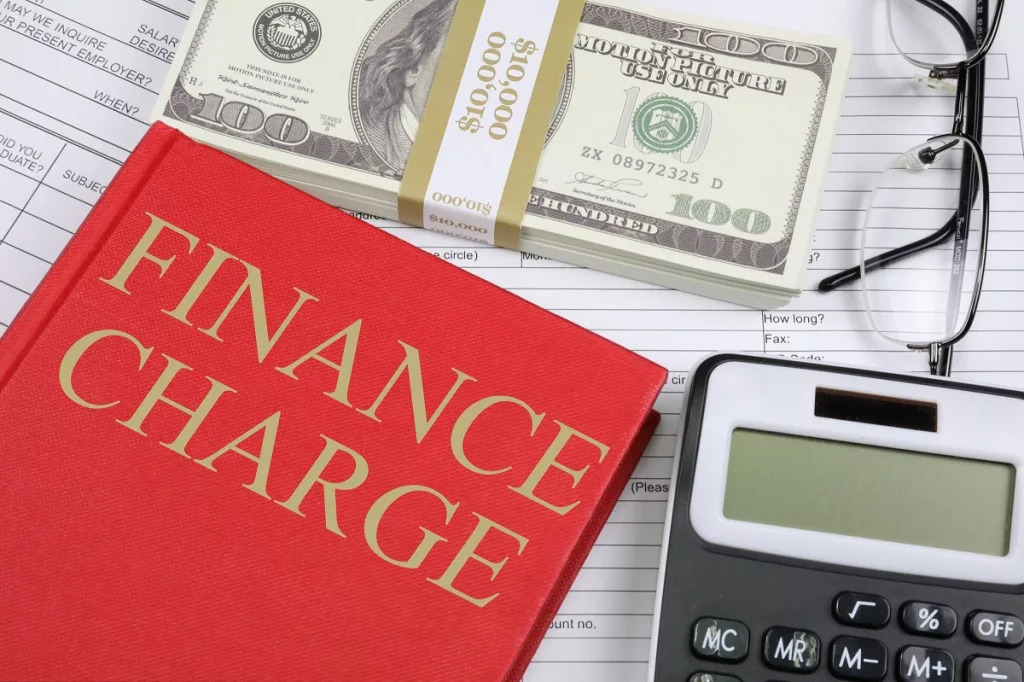What Is the Relationship Between Interest Rates and Finance Charges?

One has bought a new car and is excited to hit the road. But hold on, what’s this term, finance charge on car loan, that you see on your bill? Sounds like another money-draining entity, doesn’t it? Understanding the relationship between finance charges and interest rates is similar to grasping how your car’s engine and gas mileage are related. Knowing one can help you better understand the other and save you a ton of money in the long run.
The Engine Behind Your Loan: What Are Finance Charges?
Think of finance charges as the engine that powers your loan. Just as an engine consumes fuel to keep your car moving, finance charges are the costs you incur for borrowing money. These charges include not just interest but also any fees and additional costs associated with the loan. While the term ‘finance charge’ might sound singular, it combines various charges.
The Mileage Factor: Interest Rates Explained
On the other hand, interest rates are like the mileage your car gets; they define how efficiently you’re using the money you borrowed. A lower interest rate means you’ll spend less money over the loan term, similar to how a car with good mileage consumes less fuel over a journey. The interest rate is often expressed as an annual percentage rate (APR), including the interest rate and other charges like loan fees. Basically, the sticker on the car window tells you what you can expect in terms of fuel economy, but for your loan.
How Finance Charges and Interest Rates Interact
The interaction between finance charges and interest rates is akin to how your car’s engine performance affects its gas mileage. A more efficient engine uses less fuel, and a loan with a lower interest rate will have lower finance charges. Additionally, the loan’s structure, including its term and any associated fees, impacts the total finance charge. It’s as though your loan has various gears, and shifting into the right one can optimize your financial journey.
Why Time Matters: The Role of Loan Duration
Picture a long, open highway. The longer you drive, the more fuel you’ll consume, right? Similarly, the longer the term of your loan, the more you’ll pay in finance charges. Even if you have a low interest rate, stretching out the repayment period means the interest has more time to accumulate. The impact on the finance charge is like taking a cross-country road trip and watching the gas bills pile up, even if your car is super fuel-efficient.
Minimizing Costs: How to Optimize Finance Charges and Interest Rates
Lantern by SoFi states, “A finance charge refers to an amount you pay to borrow money. So in the case of an auto loan, a finance charge is what you pay to borrow money to purchase the car.”
No one enjoys wasting fuel or, for that matter, money. Just like tuning your car engine for optimal performance and fuel efficiency, you can take steps to minimize your finance charges. The key is to shop around for the best interest rates and understand the structure and fees associated with different loans. Negotiating a shorter loan term or making larger monthly payments can also reduce your finance charges, like opting for a car with better gas mileage to save on fuel.
Finance charges and interest rates are intricately linked, each affecting the other meaningfully. While you can’t avoid finance charges entirely—unless you’re paying in full, in cash—you can take steps to minimize them. Just like a knowledgeable car owner checks the engine and monitors fuel consumption, understanding how finance charges and interest rates interact can put you in the driver’s seat of your financial journey.







